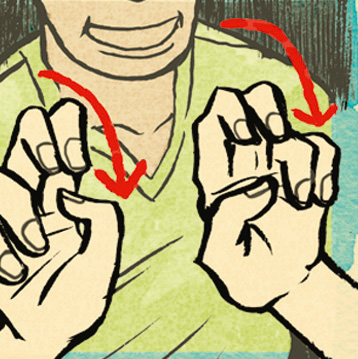
| 43 | Quotation Marks |
As a way of bringing other people’s words into your own, quotations can be a powerful writing tool.
Mrs. Macken encourages parents to get books for their children, to read to them when they are “li’l,” and when they start school to make certain they attend regularly. She holds herself up as an example of “a millhand’s daughter who wanted to be a schoolteacher and did it through sheer hard work.
” – Shirley Brice Heath, Ways with Words
The writer lets her subject speak for herself—and lets readers hear Mrs. Macken’s voice.
Quoting in American English
FOR MULTILINGUAL WRITERS
Quoting in American English
Remember that the way you mark quotations in American English (“ ”) may not be the same as in other languages. In French, for example, quotations are marked with guillemets (« »), while in German, quotations take split-level marks (“ “). Writers of British English use single quotation marks first and, when necessary, double quotation marks for quotations within quotations. If you are writing for an American audience, be careful to follow the U.S. conventions governing quotation marks.
Editing for Quotation Marks
AT A GLANCE
Editing for Quotation Marks
- Use quotation marks around direct quotations and titles of short works. (43a and c)
- Do not use quotation marks around set-off quotations of more than four lines of prose or more than three lines of poetry, or around titles of long works. Consult a style guide, such as that of the Modern Language Association (MLA), for guidelines. (43b and c)
- Use quotation marks to signal irony and invented words, but do so sparingly. (43e)
- Check other punctuation used with closing quotation marks. (43f)
Periods and commas should be inside the quotation marks.
Colons, semicolons, and footnote numbers should be outside.
Question marks, exclamation points, and dashes should be inside if they are part of the quoted material, outside if they are not.
- Never use quotation marks around indirect quotations. (43g)
- Do not use quotation marks just to add emphasis to words. (43g)